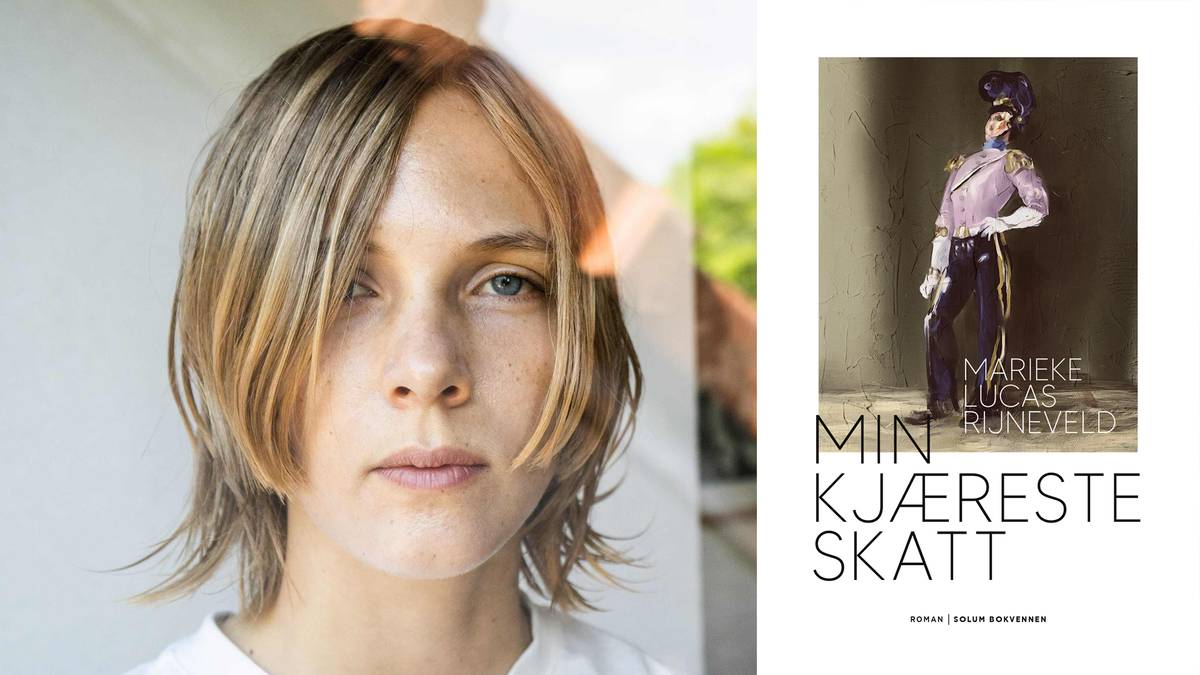Lately I have heard book lovers whisper to each other that the 30-year-old Dutch author Marieke Lucas Rijneveld’s second novel was even better than the first.
I was hurt to believe it, for his previous book, «The discomfort of the evening»was a startlingly good debut novel about grief, animal cruelty and other atrocities in the countryside in the Netherlands.
But this book is actually chopped sharper. And at least as cruel.
Obsessed with a burning love
We are back in the countryside in the same environment as last time. A 49-year-old veterinarian speaks. He lives a fairly ordinary life with his wife and two children, and carries out his veterinary practice during the great foot-and-mouth disease that ravaged the Netherlands in the early 2000s.
Then he becomes obsessed with a burning love for the 14-year-old daughter of one of the dairy farmers he regularly visits.
He describes his wife’s marriage as follows: “We had become stubborn outcasts who happened to be in the same barn”while the 14-year-old girl he calls for «its magnificent animal ».
“Lolita” parallels
The novel has several parallels to “Lolita” by Vladimir Nabokov. Both novels are told by an abuser who tries to explain himself after the abuse has become known to the authorities.
Nabokov’s “Lolita” begins with the legendary opening sentence: “Lolita, the light of my life, the flame of my loins, my sin, my soul.” The strange and biblical expression “The flame of my loins” is repeated by Rijneveld several times during “My dearest treasure” and thus makes the connection quite obvious.
In contrast to “Lolita”, which primarily tells the story of the adult man, it is the teenage girl’s world of thought that forms the center of this novel.
The vet’s gaze follows the girl closely, but at the same time adds a productive distance to the story, for example here where he studies photographs of her: “Everywhere you posed the way fourteen-year-old girls do, seductive without knowing what it means, they want you,” says the eyes, “but rather a little more pocket money, they want to be worshiped, but rather have someone to protect them from the world, they want have a magnificent life and at the same time feel invisible (…) ».
Dark songs about longing
The contrast between the terrible content and the lyrical language is the novel’s strongest card.
The sentences, which are often very long and abound in adverbs, create a singing, suggestive effect.
Rijneveld weaves together the veterinarian’s life world of blaakorp cows and insemination equipment with the teenage girl’s fascination with Roald Dahl books and Kurt Cobain.
The prose becomes a form of perverted lubrication that is lifted up into a higher entity through the glittering language.
Translator Hedda Vormeland should receive all possible praise for portraying this in Norwegian. It’s all playful and hurtful, shocking and bloody violent at the same time.
And often quite uncomfortable.
Here the vet is jealous of his own son who gets the opportunity to kiss the girl of the same age: «And not my tongue, but his should penetrate your mouth, and I could hear you laughing as I harshly inseminated a cow in the barn, and I was terrified that you would go up to your room, to the nursery that I kept seeing for me when I thought of you and you lay there in your bed, naked and surrounded by stuffed animals »
Each of the 42 chapters appears as a gothic and dark song about burning, destructive longing.
«A bad book»
Creating beautiful poetry from an abuse is on the verge of speculative. The project balances on a knife-edge, but the theme of abuse is just one of several clues in the novel.
Rijneveld user «Lolita»the motive for exploring topics such as loneliness and self-care. Not least, gender plays an important role.
Gives «Lolita» in its time came in Norwegian translation in 1959, the critic Philip Houm wrote: “A terrible book, a breathtaking and – I should think – unforgettable book. The best novel I’ve read in a very, very long time. “ I could have written the same thing about Rijneveld’s “My dearest treasure”.
We are simply lucky to be able to follow this vibrant authorship in Norwegian.


